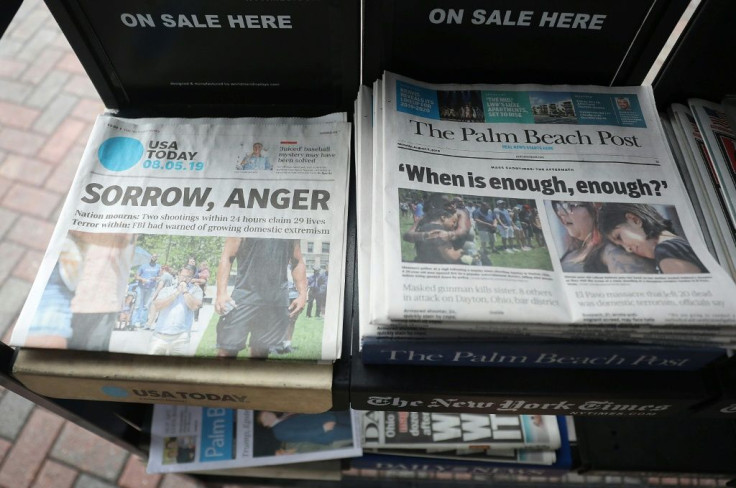Coronavirus Sucks The Life Breath Out Of Advertising, Local Newspapers

KEY POINTS
- Decling advertising revenue will hurt all local media
- Local newspapers are slimmer with less space due to less ads
- TV stations will face a crunch
Folks in the newspaper have cried the end is near ever since the internet gained popularity as a free news source. Many newspapers have gone out of business as advertisers went elsewhere. The latest obit clothes coronavirus as Dr. Death in a strong argument.
News industry analyst Ken Doctor said COVID-19 created a profound advertising crisis as many local businesses shuttered because they are non-essential. Subscription revenue generated for local news has never paid the bills.
"Retailers are closed. Car dealers aren’t selling," Doctor said. "Few people are hiring, and who’s brave enough to venture into a new house or apartment to look around?"
Publishers' joke news is defined as what you lay around the ads. Doctor reports the industry will be in depression by the end of April.
"Daily publishers will lose between 30 and 50 percent of their total ad revenue," Docter said on Nieman Journalism Lab. "Things are unlikely to improve until we’re past mass sequestration, whenever that is."
The loss of advertising is nothing new. It has been falling for at least a decade. Most recently entertainment, sports and travel sections have been either eliminated or greatly reduced.
The Great Recession sucked 17 percent of advertising oxygen out of the system in 2008 — then another 27 percent in 2009 — it’s been climbing uphill, its gasps growing more frantic as financial operators consolidate and strip-mine what was once a profoundly local industry, Doctor said. American newspapers have lost more than 70 percent of their ad dollars since 2006.
The industry enters this turning-point event with about $1 billion remaining in total annual profits. That’s a fraction of what it was at its height, but it’s still a lot of money.
If the massive ad losses we’re now beginning to see remain in place for months, all of that profitability will be gone, he predicts.
The news is even worse for alternative weeklies. These free newspapers relied almost exclusively on the people getting together in groups advertising revenue.
Nieman Journalism Lab Director Joshua Benton said last week was the worst week in history for Americ's alternative press.
"They're facing a double blow: Not only have their main advertising sources dried up, so have their main points of distribution," he said. "Where do you pick up an alt-weekly? At a bar, at a restaurant, at a theater — all the places that have gone dark.
Several local TV stations are forecasting a 20 to 30 percent loss at this point in advertising. While they don’t have reader revenue, their ample retransmission fee contracts provide a big steady source of income.
Even with record consumption of digital news, advertising there is fetching far less than you might think, Doctor said. The reasons are straightforward: Many advertisers specify that they don’t want their products to appear next to a virus-related story — and that’s where most of the traffic is, of course.
The Nieman Journalism Lab bills itself as an attempt to help journalism figure out its future in an Internet age.
© Copyright IBTimes 2024. All rights reserved.





















